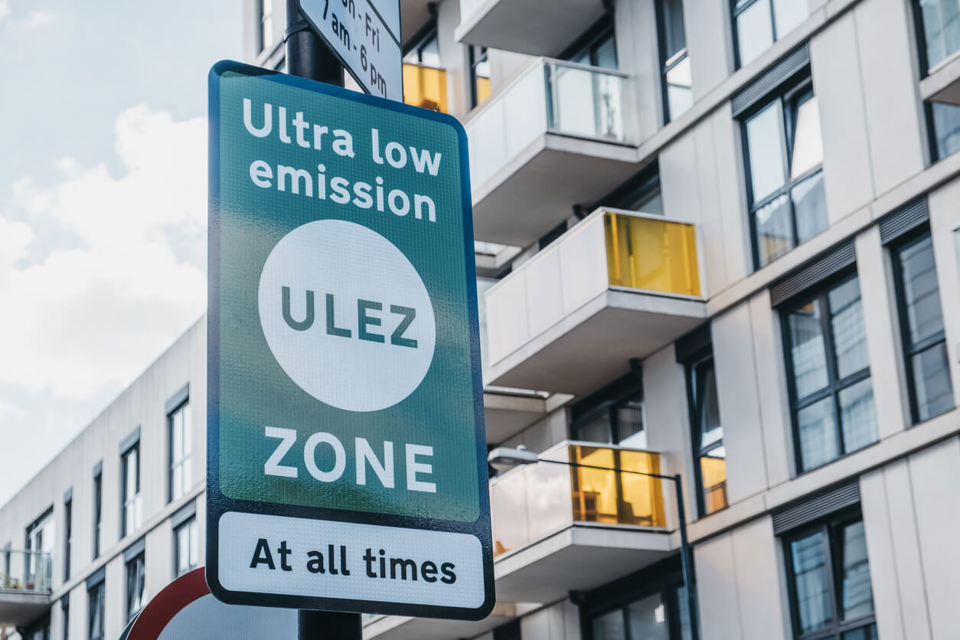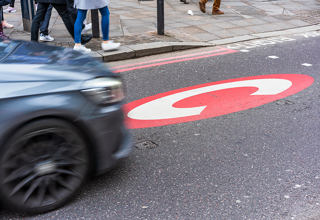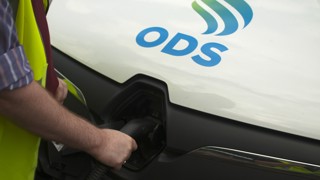The Advertising Standards Authority has upheld a series of complaints around air quality claims made in adverts arguing for the expansion of London’s ultra-low emission zone (ULEZ).
The complaints, made against the Greater London Authority (GLA) and Transport for London (TfL), related to a series of different adverts.
A GLA radio ad for the expansion of the ULEZ, heard between February and March 2023, started that, according to research, one of the most polluted places in London is inside a car.
However, the complainants challenged whether the claim was misleading and could be substantiated.
The GLA said multiple research studies had shown that the inside of a car was one of the spaces most exposed to air pollution.
They provided 10 reports – a pilot study, four reviews of studies in this area, four studies on the level of air pollution to which drivers were exposed and a study that examined levels of pollution to which children were exposed when travelling to school.
They also provided a video produced by The Guardian newspaper and King’s College London, a 2017 newspaper article, and referred to the Chief Medical Officer’s annual report 2022.
The GLA said they regularly reported on air pollution by using the city’s air quality monitoring network to analyse the long-term trends in the level of pollution in the air.
They said that their evidence showed that exposure to air pollution was highest when people were closer to the source of emissions.
It also demonstrated that road transport was the single largest source of NOx and PM2.5 emissions, which were two of the main air pollutants in London, and that levels of NO2 concentrations and exposure were highest alongside roads. And finally, that travelling within a car or van could expose a person to more air pollution than any other form of road transport.
However, the ASA considered listeners would understand the claim in the context of an ad about the expansion of the ULEZ, to mean the level of air pollution in a car in London ranked among the places with the highest levels of air pollution in the city.
It therefore expected to see evidence that compared the level of air pollution in cars in London to the level of air pollution in a variety of other contexts in which a person in London might find themselves.
Upholding the complaint, the ASA said that the evidence provided had established that proximity to the source of pollution increased exposure, car users were exposed to air pollution when inside their vehicle and that it could be higher than when using other forms of transport, and that London’s air was polluted.
However, a direct comparison between the level of air pollution within a car in London to a variety of other locations and contexts around London had not been made.
TfL, meanwhile, had run a series of adverts on TV, radio and in the press, from January to June 2023, with more than 500 complaints registered with the ASA around some of the air quality claims they contained.
The ASA upheld two complaints, the first of which related to marketing material that stated NO2 had reduced by almost a half since the implementation of the ULEZ in Central London.
The TfL document “ULEZ one year report” said that in October 2022 there had been an estimated 46% reduction in Central London roadside NO2 concentrations compared to a “no ULEZ” scenario.
However, to calculate the reduction, TfL had used data from roadside monitoring sites for the period January 2017 until October 2022 for Central, Inner and Outer London.
It had calculated the proportion of NO2 concentrations attributed to traffic alone, before considering how NO2 concentrations had been impacted from sources outside the ULEZ, for instance, the nationwide shift of vehicles to newer, less polluting cars that was happening regardless of the ULEZ.
Using that approach it had then calculated the difference between a non-ULEZ and a ULEZ scenario in October 2022.
While the ASA acknowledged TfL’s explanation of the basis of the percentage calculation, it said that the claims were likely to be understood as representative of the reduction in NO2 as recorded by, for example, air quality sampling before the introduction of the charges and since the implementation of the Central London ULEZ, rather than being based on the calculated difference between a non-ULEZ and a ULEZ scenario.
Clear qualification was therefore required in order to ensure that the claims would be fully understood, but because the basis of the claims was not given, the ASA concluded that the ads were likely to mislead.
A further complaint was upheld around the definition of ‘Outer London’ and air pollution related deaths.
The ASA understood no official definition of Outer London existed. It also understood the ULEZ had been introduced to Central London in 2019, and expanded to the Inner London area, inside the North and South Circular roads, in 2021.
It considered, in the context of ad about the ULEZ expansion, listeners would likely understand the term “Outer London” as referring to areas that had not already been covered by the ULEZ.
It therefore considered listeners would understand the claim “most air pollution related deaths actually occur in Outer London areas” in the ad to refer to the proportion of air pollution-related deaths in the areas that had previously not been covered by the ULEZ.
However, with the claim based on modelling, the ASA considered that listeners were likely to understand from the claim, which referred to ‘actual’ deaths, that the evidence supporting the claim was not estimated in anyway.
Clear qualifying information to explain the basis of the claim was therefore required, it said.























Login to comment
Comments
No comments have been made yet.